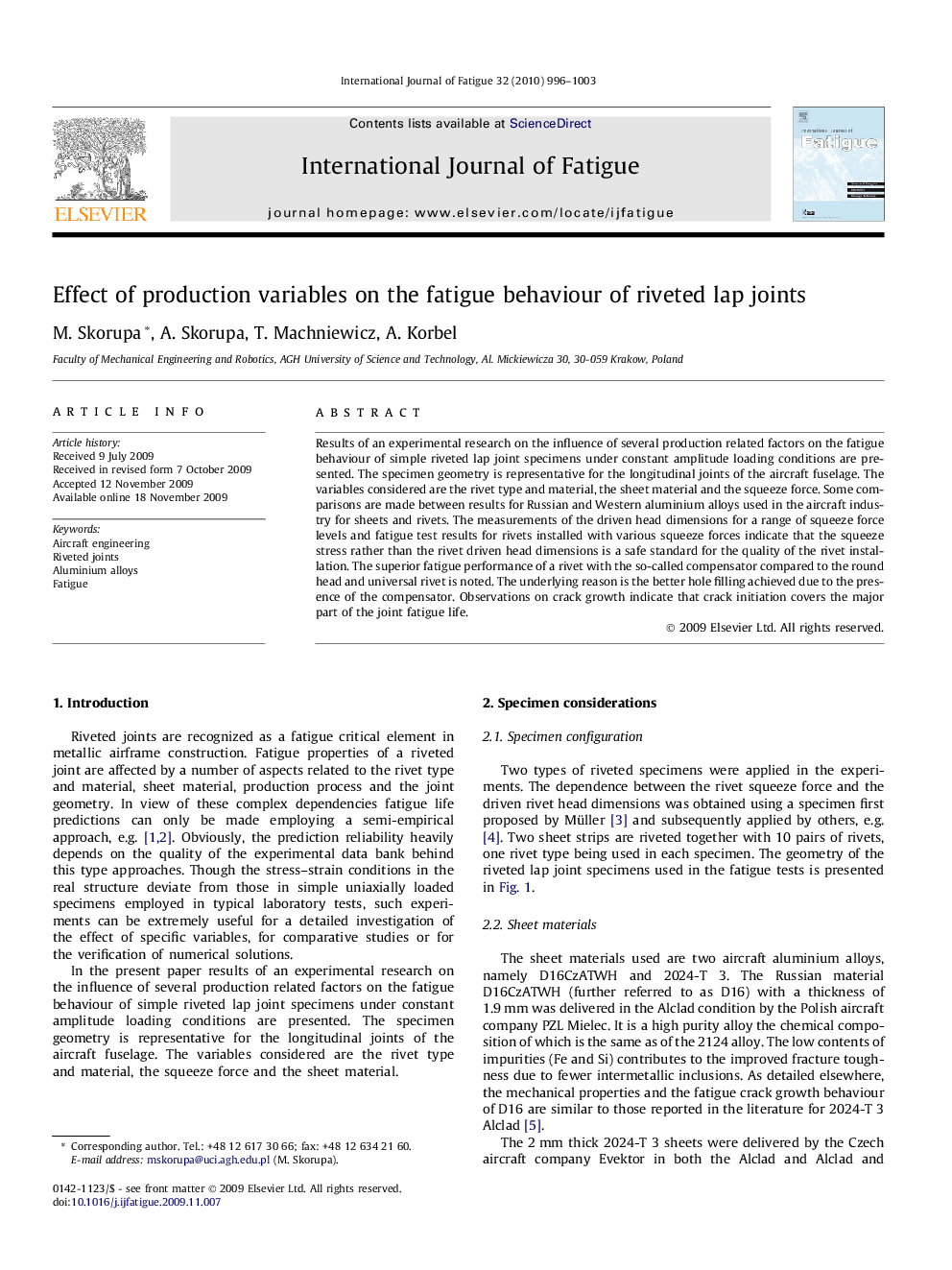| Article ID | Journal | Published Year | Pages | File Type |
|---|---|---|---|---|
| 781305 | International Journal of Fatigue | 2010 | 8 Pages |
Results of an experimental research on the influence of several production related factors on the fatigue behaviour of simple riveted lap joint specimens under constant amplitude loading conditions are presented. The specimen geometry is representative for the longitudinal joints of the aircraft fuselage. The variables considered are the rivet type and material, the sheet material and the squeeze force. Some comparisons are made between results for Russian and Western aluminium alloys used in the aircraft industry for sheets and rivets. The measurements of the driven head dimensions for a range of squeeze force levels and fatigue test results for rivets installed with various squeeze forces indicate that the squeeze stress rather than the rivet driven head dimensions is a safe standard for the quality of the rivet installation. The superior fatigue performance of a rivet with the so-called compensator compared to the round head and universal rivet is noted. The underlying reason is the better hole filling achieved due to the presence of the compensator. Observations on crack growth indicate that crack initiation covers the major part of the joint fatigue life.
